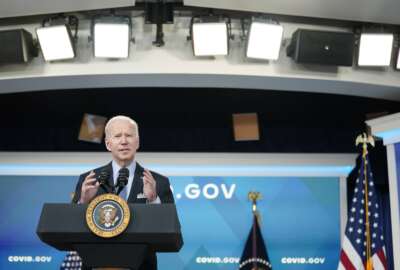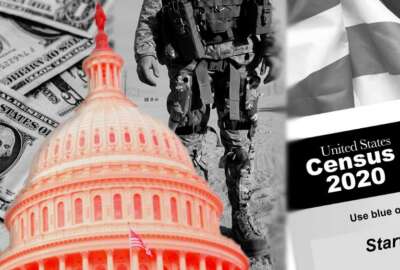Agencies take action to improve federal services for transgender Americans
On Transgender Day of Visibility, the White House announced agency actions to improve federal services and customer experience for LGBTQ+ Americans.
The White House presses agencies to make federal services more inclusive, particularly when it comes to people who are transgender. The Biden administration said in a fact sheet on March 31, Transgender Day of Visibility, that it’s aiming to break down systemic barriers that transgender people often face.
In an effort to accomplish that, the administration said it will “support the mental health of transgender children, remove barriers that transgender people face accessing critical government services and improve the visibility of transgender people in our nation’s data.”
Getting those goals into action in large part comes down to data, according to the fact sheet. Improving and using high-quality data is an ongoing initiative for the federal government.
The initiatives add to a central goal of the President’s Management Agenda: delivering excellent, equitable and secure federal services and customer experience. In this instance, that means focusing on the experiences of transgender, non-binary and gender non-conforming Americans.
The announcement additionally folds into the White House’s executive order from 2021 on enhancing diversity, equity, inclusion and accessibility for federal agencies. That mandate focused in part on improving the experiences of LGBTQ+ individuals in government.
Several agencies announced new actions that would “expand the collection and use of sexual orientation and gender identity data,” the fact sheet stated.
One of those agencies looking to better support transgender Americans is the Census Bureau. According to the fact sheet, the agency plans to collect more data on topics like occupation, education and home ownership for LGBTQ+ individuals, to ultimately provide better services to those groups.
The fiscal 2023 budget request for the Census Bureau includes $10 million to improve transgender visibility. In particular, it’s looking to add questions about sexual orientation and gender identity to the Bureau’s American Community Survey. The funding will go toward research for that initiative, the fact sheet stated.
“Improving how we collect data about sexual and gender minority populations is a critical step in producing accurate data,” the Census Bureau said in its 2023 budget request. “This initiative would fund cognitive testing beginning in FY 2023 to better construct question wording on sexual orientation and gender identity topics.”
The White House also highlighted its goal to enhance gender data and research at the Department of Health and Human Services. As part of that effort, HHS evaluated how transgender Americans want to portray themselves on federal identification documents, with research from the Collaborating Center for Question Design and Evaluation Research (CCQDER) at the National Center for Health Statistics (NCHS).
That information led to changes, for example, at the State Department. The agency published evaluations on March 29 about the definition of the “X” option for gender on passport forms.
To further enhance federal services, HHS also released work on March 11 centered on improving data collection for gender identity and sexual orientation. The National Institutes of Health commissioned the research, which will help agencies with future data collection and research on supporting transgender Americans.
“More reliable data is needed to better assess, understand and address the unique health concerns and needs of sexual and gender minority (SGM) people. Expanding data collection on sexual and gender minorities is also critical for enhancing diversity, equity, and inclusion within the scientific and health research workforce,” NIH Acting Director Lawrence Tabak said in a statement.
Along with that, the Equal Employment Opportunity Commission announced that it will add more gender identification options for those filing discrimination charges. Individuals will have the option to select “X” for gender as part of a voluntary self-identification section on those forms.
“To advance our mission to prevent and remedy employment discrimination, we must serve all workers, including those who do not identify as male or female,” EEOC Chairwoman Charlotte Burrows said in a press release. “Our public-facing forms should make clear that we respect that diversity.”
Copyright © 2025 Federal News Network. All rights reserved. This website is not intended for users located within the European Economic Area.
Drew Friedman is a workforce, pay and benefits reporter for Federal News Network.
Follow @dfriedmanWFED






